Leslie Mean is a 25-year-old single white female who presents to the PA school admissions committee on her second attempt to get into PA school.
She has a 3.6 overall GPA and a 3.5 science GPA. She holds a Bachelor of Science degree in biology, had an SAT score of 1,200, and a GRE score of 303.
She has two years of hands-on clinical experience working as a CNA and a long history of volunteer work, which exemplifies her desire to help her community.
She is kind and considerate and has reference letters that demonstrate her maturity and strong interpersonal skills.
She was accepted into PA school on her second attempt.
Who is Leslie, and why did she get into PA School?
When asking the question: What do I need to do to get into PA school? You would be smart to talk to Leslie.
Leslie is a hypothetical PA school applicant who went on to become a PA school student, an entirely average PA school student.
She also embodies what PA schools across the country are looking for at this very moment.
How do I know this?
Because the most recent data from the PAEA semi-annual report, representing responses from over 85% of PA programs detailing characteristics of the 27,283 PA school applicants and 8,802 students accepted in PA school, show that they are filling their seats with Leslie.
As much as I like to talk about not being average and differentiating yourself from the pack, it's nice to know what average is. Average provides a baseline by which you can measure your progress, set goals, and develop an application timeline.
Does this mean you have to be just like Leslie to get into PA school?
Absolutely not, first, factors such as race, age, ethnicity, etc., are of no importance, and you certainly don't have to be female to get into PA school (I am living proof).
But it is safe to assume that most schools are looking to keep their graduation and certifying exam pass rates high. They have an incentive to take fewer risks, and because of this, anything below average is considered a risk.
Thus, take a good look at Leslie and focus on factors that you can control to differentiate yourself, like your academic standing, your experience, your volunteer activities, your references, and your essay.
If you set the bar at Leslie and end up being a Mother Theresa, I am fairly sure you will be accepted into PA school, although I have no data on religious preference and PA school acceptance rates. 🙂
What are your chances of getting into PA school?
- Approximately 27,283 people apply to PA school in any given year.
- Approximately 20% of all applicants across the nation gain acceptance to a PA program in any admissions cycle.
- Applying to one PA program gives you about a 25% chance of acceptance while applying to 12 PA programs increases those chances to 49%. There is no statistical benefit to applying to more than 12 PA programs.
- Of the PA students accepted, more than two out of three (65.3%) (a.k.a. the majority) had applied to PA school previously.
- The average PA program's acceptance rate is 7%. However, some schools have much higher acceptance rates, while others have much lower acceptance rates. For example, the acceptance rate at Harvard Medical School is 4%, while the acceptance rate at the University of Central Florida is 65%.
So, what does an average PA school applicant who is admitted to PA school (i.e., student) look like?
Let's take a look:
In studies, the five most influential noncognitive factors known to have an effect on PA school admissions are faculty interactions, career motivation, knowledge of the PA profession, maturity, and professionalism. - Journal of Physician Assistant EducationClick To Tweet→ The average PA school student is 25 years old
- The average age of first-year students ranged between 25 and 28 for all categories
- The median age at application is 25 years old
- The median age of recently certified PAs is 27
- For the past six years, the median age of all certified PAs is 38
| Age Range | Percentage of Matriculants |
|---|---|
| 22-23 | 21.6% |
| 24-25 | 24.5% |
| 26-27 | 22.2% |
| 28-29 | 17.1% |
| 30-31 | 10.8% |
| 32-33 | 3.6% |
| 34-35 | 1.1% |
| 36-37 | 0.6% |
| 38+ | 0.4% |
→ The average PA school student is female
The gender distribution of first-year students has started to stabilize after a 20-year trend of a gradually increasing proportion of women. In 1980, 36 percent of PAs were female. Today, 65.6% of matriculated PAs are female.
- Female: 65.6%
- Male: 32.9%
- Non-binary: 1.5%
| Gender | Percentage of Matriculants |
|---|---|
| Female | 65.6% |
| Male | 32.9% |
| Non-binary | 1.5% |
As you can see, the majority of matriculating PA students are female. This is consistent with the overall trend in the healthcare field, where women make up a majority of the workforce.
There are a few reasons why there are more female matriculants than male matriculants in PA schools. First, women are more likely to be interested in healthcare careers. Second, women are more likely to apply to PA school than men. Third, women are more likely to be accepted to PA school than men.
However, it is important to note that the number of male matriculants in PA schools has been increasing in recent years. This is likely due to the fact that the PA profession is becoming increasingly popular, and more and more men are choosing to become PAs.
→ The Average PA school applicant has a bachelor’s degree
The majority of PA school applicants hold a baccalaureate degree.
- No academic degree: 8.1%
- Certificate: 0.2%
- Associates Degree: 2.6%
- Baccalaureate Degree: 70.5%
- Master’s Degree: 6.6%
- Doctoral Degree: 0.9%
→ The Average PA school applicant graduated with a degree in Natural Sciences
Most PA school applicants hold a degree in natural sciences (biology, chemistry, etc.), but this doesn't mean you have to!
| Major | Percentage of Matriculants |
|---|---|
| Biology | 28.4% |
| Health Sciences | 19.4% |
| Psychology | 16.2% |
| Chemistry | 12.2% |
| Sociology | 7.7% |
| English | 5.2% |
| Other | 9.1% |
The most common major is biology, which makes up 28.4% of all matriculated PA students. This is likely because biology provides a strong foundation in the sciences, which is essential for PA school.
Other popular majors include health sciences, psychology, chemistry, and sociology. These majors also provide students with the knowledge and skills they need to succeed in PA school and in the PA profession.
It is important to note that there is no one "right" major for PA school. PA programs are looking for applicants with a strong foundation in the sciences, but they also value applicants with a variety of experiences and perspectives.
Here are some tips on how to choose the best undergraduate major for PA school.
→ Matriculating PA students had an average of 2,669 patient contact experience hours.
PA school applicants come to the table with a variety of medical experiences, especially if they are strong applicants.
It is important to note that the amount of clinical experience required for PA school varies from school to school. Some schools may have no minimum requirement, some may have a minimum requirement of 1,000 hours, while others may require 3,000 hours or more. It is important to research the specific schools that you are interested in to see what their requirements are.
To be a successful PA candidate, you should aim to have at least 2,000 (preferably 3,000+) hours of hands-on patient experience at the time of application. This is 20-30 times more than the number of hours needed for medical school!
Experience in one of the following areas is common:
- Nursing
- Registered Nurse (RN)
- Licensed Practical Nurse (LPN)
- Certified Nursing Assistant (CNA)
- Allied Health
- Physical Therapist
- Occupational Therapist
- Registered Radiologic Technologist
- Athletic Trainer
- Emergency Services
- Emergency Medical Technician (EMT)
- Paramedic
- Emergency Room Technician
- Miscellaneous
- Phlebotomist (that was me!)
- Medical Researcher
- Medical Volunteer
Medical Experience Statistics for PA School Applicants
Of applicants admitted to PA school, 90.5% worked in healthcare before applying to PA school. The most common healthcare experience is a certified nursing assistant (CNA) 30.4% and medical assistant (MA) 26.5%. Among those accepted, 23.3% worked as a scribe, 19.3% had experience as an EMT/paramedic, and 8.9% had experience as an emergency room technician. In addition to paid healthcare experience, 55.2% of matriculating PA students participated in volunteer community service work, such as Peace Corps, AmeriCorps, service-learning activities, and mission work.
| Health Care Employment Prior to PA School | Percent |
| Nursing assistant | 30.2% |
| Medical assistant | 26.5% |
| Scribe | 23.3% |
| EMT/Paramedic | 19.3% |
| Emergency room technician | 8.9% |
| Home health aid | 8.7% |
| Phlebotomist | 7.3% |
| Clinical research coordinator/assistant | 7.3% |
| Physical therapist/Physical therapy assistant | 5.7% |
| Pharmacy technician | 4.1% |
| Athletic trainer | 3.8% |
| Medical technician | 3.3% |
| Medical reception/records | 2.9% |
| Medic or medical corpsman | 1.7% |
| Radiology technician | 1.6% |
| Dental assistant/hygienist | 1.4% |
| Source: 2020 PAEA student report |
Average Health Care Experience Hours of Matriculating Students
According to the latest PAEA program survey and report, for those applicants accepted to PA school, the average student had 2,669 patient contact experience hours. Accepted students had, on average, 1,490 hours of “other healthcare experience,” 378 hours of community service, 1,883 hours of other work experience, and 108 hours of healthcare shadowing.
| Experience | Maximum | Mean | Median | 75th Percentile | 90th Percentile |
|---|---|---|---|---|---|
| Patient Contact Experience | 25,000 | 3,240 | 2,669 | 3,850 | 5,834 |
| Health Care Shadowing | 2,807 | 215 | 108 | 152 | 231 |
| Community Service | 18,000 | 719 | 378 | 515 | 938 |
| Other Health Care Experience | 9,000 | 1,791 | 1,490 | 2,098 | 2,903 |
| Other Work Experience | 12,651 | 2,315 | 1,883 | 2,278 | 4,200 |
* 2023-2024 Update: Some recent data suggests HCE hours are significantly declining, with a new average of 1.88 years of healthcare experience among matriculating (accepted) students.
Admissions directors Q&A: What are some of the points that are extremely impressive to you in the application?
Commitment to community, overcoming adversity, a WELL written narrative, great letters of reference from someone that REALLY knows you, ability to juggle many responsibilities simultaneously, and activities that show a particular passion for something are what we look for in a PA school applicant - Penn State University PA ProgramClick To Tweet→ GRE scores of those accepted into PA school tend to be in the above-average range
The mean GRE scores for matriculated PA students are 152.2 for verbal reasoning, 152.0 for quantitative reasoning, and 3.9 for analytical writing. The 25th percentile scores are 140 for verbal reasoning, 139 for quantitative reasoning, and 3.0 for analytical writing. The 75th percentile scores are 164 for verbal reasoning, 165 for quantitative reasoning, and 4.5 for analytical writing.
| GRE Section | Mean | 25th percentile | 75th percentile |
|---|---|---|---|
| Verbal Reasoning | 152.2 | 140 | 164 |
| Quantitative Reasoning | 152.0 | 139 | 165 |
| Analytical Writing | 3.9 | 3.0 | 4.5 |
The average GRE score of matriculated PA school students has been trending up over the years.
| Year | Average Total GRE Score |
|---|---|
| 2021 | 303.6 |
| 2020 | 302.2 |
| 2019 | 301.4 |
| 2018 | 299.8 |
As you can see, the GRE is the most commonly required exam for PA school admissions. This is followed by the TOEFL, the MCAT, and the SAT.
| Exam | Required by |
|---|---|
| GRE | 57.7% |
| TOEFL (Internationl Students Only) | 71.3% |
| MCAT or GRE | 14.0% |
| SAT | 10.0% |
| ACT | 7.0% |
| CASPer | 5.0% |
Competitive GRE scores average around a composite score of 300, and scores above 310 are extremely competitive. This averages to about 150 on verbal reasoning, 150 on quantitative reasoning, and 3.5 on writing.
Please note that these scores are averages of past GRE examinations, and you should consider your score competitive if they are above the 50th percentile.
Percentiles are more important than actual GRE scores. Every GRE differs in difficulty, which is why none of them can be considered equivalent, thus, necessitating the need to use a standardized ranking method.
→ The average PA school student has between a 3.5 and 3.6 overall GPA and an undergraduate science GPA of 3.5
- According to the latest PAEA program report, the average undergraduate overall GPA for PA school applicants who were accepted into PA school was 3.6. Accepted students had, on average, a science GPA of 3.5, a non-science GPA of 3.6, and a CASPA BCP (biology, chemistry, and physics) GPA of 3.5
- The average overall GPA for students who were not accepted into PA school was 3.28. Non-matriculant science GPA was 3.17.
Interesting factoid: As the age of applicants increases, their GPA tends to be lower.
| GPA type | Average |
|---|---|
| Overall GPA | 3.6 |
| Science GPA | 3.5 |
| Non-science GPA | 3.6 |
| CASPA BCP GPA (biology, chemistry, and physics) | 3.5 |
| GPA | Percentage of Matriculants |
|---|---|
| 3.75 or higher | 56.5% |
| 3.50-3.74 | 28.5% |
| 3.25-3.49 | 8.5% |
| 3.00-3.24 | 4.5% |
| Below 3.00 | 2.0% |
→ Most PA school students are Caucasian
As you can see, the majority of matriculated PA students are white. This is consistent with the overall trend in the United States, where white people make up the majority of the population.
However, it is important to note that the racial makeup of PA students is becoming more diverse. The percentage of Asian matriculants has increased in recent years, and the percentage of Hispanic/Latino matriculants is also increasing.
If you are considering applying to PA school, it is important to be aware of the racial makeup of PA students. If you are a member of a minority group, you may want to consider applying to programs that have a strong commitment to diversity and inclusion.
| Race | Percentage of Matriculants |
|---|---|
| White | 67.2% |
| Asian | 14.3% |
| Hispanic/Latino | 10.3% |
| Black or African American | 5.4% |
| Native American | 0.8% |
| Multiracial | 2.0% |
→ What are your chances of being accepted into PA school?
- If you apply to one PA program - you have a 25% chance of getting in
- If you apply to 12 programs (or more) - you have a 49% chance of getting in
- The average number of PA programs applied to is 8
Interesting factoid: There is little statistical benefit of applying to more than 12 programs!
→ Pucker up, baby. Most PA students are single!
Most students are single (72.2%), though about a quarter are married (24.5%). A little under two percent were divorced, and 1.6% were in a domestic partnership/civil union.
Most students (92.1%) have no legal dependents. For the nearly 7.9% of students that reported having legal dependents other than themselves, the average number of dependents was two, with a range of 1 to 9 dependents.
| Legal dependents | Percentage of Matriculants |
|---|---|
| With | 7.9% |
| Without | 92.1% |
Over 30% of respondents said they were considered dependent of their parents.
| Marital Status | Percentage of Matriculants |
|---|---|
| Single | 72.2% |
| Married | 24.5% |
| Divorced | 1.6% |
| Domestic Partnership/Civil Union | 1.6% |
| Separated but still legally married | 0.2% |
| Widowed | 0% |
→ Most PA students are from "The Burbs"
Half of the students reported spending most of their time in a suburban setting. One-quarter of respondents reported spending most of their time in a rural environment, followed by 15% in an inner-city setting.
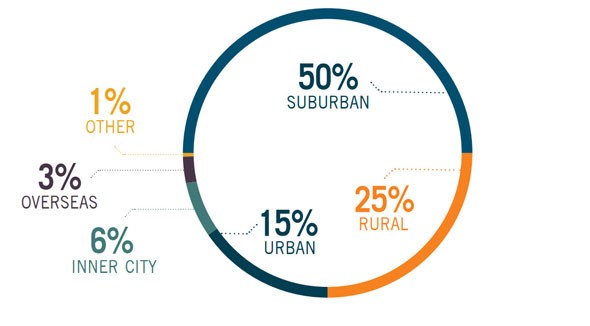
→ Most PA students don't come from extreme riches
According to the PAEA Student Report, the median family gross income of matriculated PA students was $110,000. This means that half of the matriculated students had a family gross income below $110,000, and half had a family gross income above $110,000.
The family gross income of matriculated PA students varies widely. The 25th percentile family gross income was $85,000, and the 75th percentile family gross income was $135,000. This means that 25% of the matriculated students had a family gross income below $85,000, and 75% had a family gross income above $85,000.
| Family Gross Income | Percentage of Matriculants |
|---|---|
| Below $85,000 | 25% |
| $85,000-$110,000 | 37.5% |
| $110,000-$135,000 | 25% |
| Above $135,000 | 12.5% |
Admissions directors Q&A: Who is the perfect PA school applicant?
Our program will look to utilize a holistic approach to admissions. We look at academic success, life experiences, and community activities to evaluate all candidates. There is no one mold to fit the PA profession. However, PAs need strong communication skills, leadership, grit, and a willingness to support the community - Michigan State University PA ProgramClick To Tweet Students need to be well organized, know how to manage their time and outside influences, and have a genuine desire to help and care for people. PA school is rigorous, so we recommend honest conversations with family and friends ahead of your start. - CWRU PA ProgramClick To Tweet→ PA school students don't smoke pot and are not drug dealers or part of the Italian Mafia
According to the PAEA Student Report, 99% of PA programs require a background check and 92% of PA programs mandate drug testing. This means that the vast majority of PA programs require applicants to undergo a background check and drug test before they can be admitted to the program.
The background check typically includes a review of the applicant's criminal history, driving record, and employment history. The drug test typically screens for illegal drugs, such as marijuana, cocaine, and heroin.
The purpose of the background check and drug test is to ensure that the applicant is of good moral character and that they are not using illegal drugs. PA programs have a responsibility to ensure the safety of their students, faculty, and patients.
If you are considering applying to PA school, it is important to be aware of the background check and drug testing requirements. You should also be prepared to provide documentation of your criminal history and drug use.
Here is a table that summarizes the background check and drug testing requirements of PA programs:
| Requirement | Percentage of Programs that Require |
|---|---|
| Background Check | 99% |
| Drug Testing | 92% |
Some Important Points
It's Not Rocket Science: It is important that a candidate demonstrates reasonable aptitude in the hard sciences such as anatomy, physiology, chemistry, and biology. It is more likely that the committee may overlook a grade of C in U.S History or Spanish I. They will be less tolerant of a marginal grade in the sciences.
Show compassion: Your GPA is stellar, and you've amassed an impressive amount of medical work experience in the little spare time you have while keeping your grades pristine, but you still get that dreaded rejection letter. Why?
You didn't do enough volunteer work. Volunteering exemplifies your desire to help your fellow man—the attribute identified by schools as one of the most integral to becoming a successful PA.
Students who have had experience in working with underserved populations, rural or diverse populations, performing volunteer service or disaster relief, or other experiences that illustrate a drive and compassion for others often stand out to the admissions committee!
The view from the top isn't that crowded
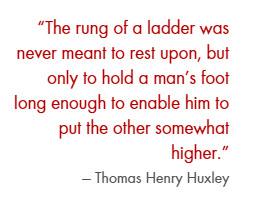
It's an easy race to the bottom, so set your sights on the top.
Many people will be set back when they read that only 25% of applicants will be accepted into PA school in any given year, but this should be good news. Being in the top 25% in any field is not nearly as hard as it sounds, simply because the majority of the competition is in the bottom 75% and has bottom 75% qualifications.
For example, you have read this entire post, so you now know what the average PA school applicant who has had some success looks like. You understand what a top 75 percent candidate looks like. Your goal now is to be better than the average 75% and exceed the top 25%.
If you aim high, you will be competing with a much smaller minority, and your odds of getting an acceptance letter will increase dramatically. It also helps if you apply to 12 programs. 😉
*Tables and data were sourced from the latest PAEA Semi-Annual Report.



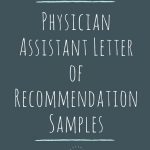
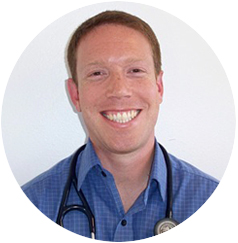


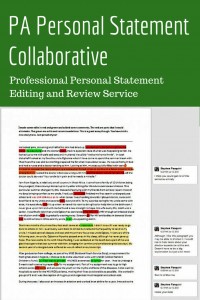








“Skin color has nothing to do with acceptance rates, but it is interesting (and maybe a bit sad) to know that the vast majority of first-year students were White”
Is it really too hard to simply leave your personal politics out of a deceptively informative article? I’m not even white and to say it’s “sad” is inherently racist. Either there aren’t as many non-white applicants or they’re just not getting accepted. I don’t know about you, but I’d want to be evaluated by a PA who earned their degree on skill, not diversity quotas.
Hi I’m Gp with 24years experience
Want to be physician ass even interested to study PA any chance ?i want to move to Manitoba but have job of PA .my sons R in Us studying.
THX
Hi Roghayeh, where are you currently located? Are you practicing/working/studying outside of the United States currently?
Stephen
Iam an international medical graduate with experience of 1 year residency in India. I also have clinical experience working as a doctor in india for 6 to 7 months.what are my chances of getting into PA program.kindly reply.
Do you have any studies showing if it if fax acceptance into PA school if my daughter has attended multiple undergraduate institutions? She has a 3.6 science GPA and 375 overall GPA but wanting to transfer her senior year to the East Coast. I’m trying to convince her that that’s not a good idea.
Hi Stephen,
I have two business degrees, but decided to make a career switch to healthcare as a PA-C a few years ago. My mother has been ill for 10+ years with various illnesses (cancer and a terminal illness) and I have been completely responsible for her care during that time. Since I haven’t held an “actual” job in health care, do you have any advice on how I could place value on the daily (extremely extensive) care-giving that I provide my mother with? I have received awesome letters of recommendation and support from a top-notch doctor of hers who has been more than happy to attest to my credentials, but I’m still very worried that it won’t be enough. Any thought are appreciated.
Hi Medina, first off I want you to know how much I respect that you have provided this care for your mother. There is no more important job in this world than being there and caring for the ones we love. It is also one of the hardest. You can certainly mention how caring for your mother has affected you both as a person and how it has confirmed your desire to be a PA but I would still recommend finding a job providing hands-on care outside of the home. This will help a lot when you apply and most schools do want to see this as part of your application. This doesn’t mean you can’t try applying now and see what happens, but in the meantime, I would try to make the time to get this type of experience. It could be the missing piece that will tip the scales in your favor.
Stephen
If I can fit all of the qualifications aside from GPA, how much would this dictate getting into PA school? I had some medical issues my first two years of college and it greatly impacted my schooling. I was able to do alright, but I was wondering if there was any rule about circumstances like this and how they influence the decision?
I am a foreign pharmacist, and I graduated from faculty of pharmacy in 2000. Will you count my bachelor credits, or I still need to have all the biology, chemistry, biochemistry class.
Wow I just made nd of stubled across this site and am glad I did. This is really helpful. I’m a little older then the average applicant I’m 33 years old and I’ve been a medical assistant for the past 8 years. I am married and have 5 children and I’m Puerto Rican so I am far from the average applicant. I am currently enrolled in a Health Science Assicioctes degree program and wanted to make sure I was on the right path. I’m going to make sure I take all these steps to increase my chances of getting in because I really do have a passion for helping people and medicine. I actually love my job as an CMA but I’m ready to be challenged.
Race has nothing to do with being accepted into medical school. Like others, we too must fulfill every requirement that is needed to gain acceptance and to obtain aid to assist us throughout our matriculation at our desired university.
I don’t believe she intended to say that her race (ethnicity) is setting her apart in a beneficial way. She also mentioned she is a mother of 5 and that she’s older than an average student. Let’s be positive and give feedback that is useful. Her question was in regards to her current school track…focus.
That makes no sense. Nobody whatever race, is given automatic entry to med school. They had to work for it. Over 70% of med school kids are white. You have to work hard to get in whatever race you are.
Although it is often said – especially by admissions committees – that volunteer work shows a “desire to help your fellow man”, this is probably, realistically (at least in the case of medical professional school applicants) reading too much into why a lot of these people volunteer.
What do I mean here? Well, as you outline, volunteer work is considered pretty much “required” (at least “highly recommended”) by most MD/DO/PA, etc. programs (and is an actual, not just highly recommended, requirement at some places). This means that “desire to help your fellow man” or not (read this as “desire to volunteer during limited free time” if you prefer) or not, most applicants are going to still get in volunteer hours (again, because they know they “need” to in order to get accepted).
This, of course, doesn’t mean that everyone with volunteer hours are disingenuous in their reasons for volunteering, but this “requirement” does open the door for that type of thing to happen.
It would be far better to NOT require this activity of applicants, but still take actual volunteer time into consideration IF it added to the overall impression of the applicant (if we are being honest here, all of us who have worked in the medical field know people who did substantial volunteer hours just because that was what was needed to apply to school, and then hung up the volunteer work as soon as the acceptance letter was in hand). And we can’t fall back on that equally illogical assumption that “reviews from the leaders of these volunteer groups will weed out those who have volunteered for the wrong reason” (and, again, all of us who have worked in the medical field have heard some variation of this as well). For one, this is asking the volunteer coordinator (or the one writing the review at least) to be able to discern a volunteer’s real inner motivation (which is not always possible). For another, many of these people desperately need volunteers, so if they have to give a glowing review to a professional school to attract volunteers (even if only temporarily) then they will do it.
I’m not trying to be cynical here (again, plenty of people volunteer for the right reasons – probably a large percentage of all applicants, I would think), but simply having “volunteer experience” in no way directly proves one has a legitimate “desire for your fellow man”.
Hi hello – I am trying to use the table regarding the average GPA for PA school admission for academic purposes. Is there an original source for this? Thanks!
Hi Sara, you can find some sources for data here:
PAEA program survey and reports: http://paeaonline.org/research/program-report/
PAEA student survey and reports: http://paeaonline.org/research/student-survey-report/
NCCPA Research: https://www.nccpa.net/research
AAPA Reports: https://www.aapa.org/shop/
Why has the author or researcher/s not included data on LBGT? A glaring omission, in my opinion.
Hi Eric, I assure you this was not intentional there is just no published data on this that I could find. Hopefully, the AAPA will include this in their next census. They may need to be nudged a bit!
Stephen
Wow! I just happened upon this site. In 1995, when I started PA school, you had to have a 3.8 GPA to even get a F2F interview! And science gpa was 3.9!
But many in my class were younger…21-25 mostly
I am wondering when this article was originally published with these statistics. I will not conceal that I am a little frustrated, because I am the epitome of average as is defined by this article and on my second (not successful) year of applications to PA school. I am a 25, year old white female with both GPA and GRE slightly above this stated average (except for the writing score) and with 2 years working as a technician at an allergist office. What am I doing wrong??
I love the part where the author states that most PA students are white and that is sad. A minority student with the qualifications to matriculate at a PA school automatically gets a free ride at any medical school of their choice. Why would you be a PA. Do the math!!
Why would you assume that? It’s not true. Having been accepted to med school and watching my friend’s trials getting accepted to PA school, there’s no free ride to medical school!